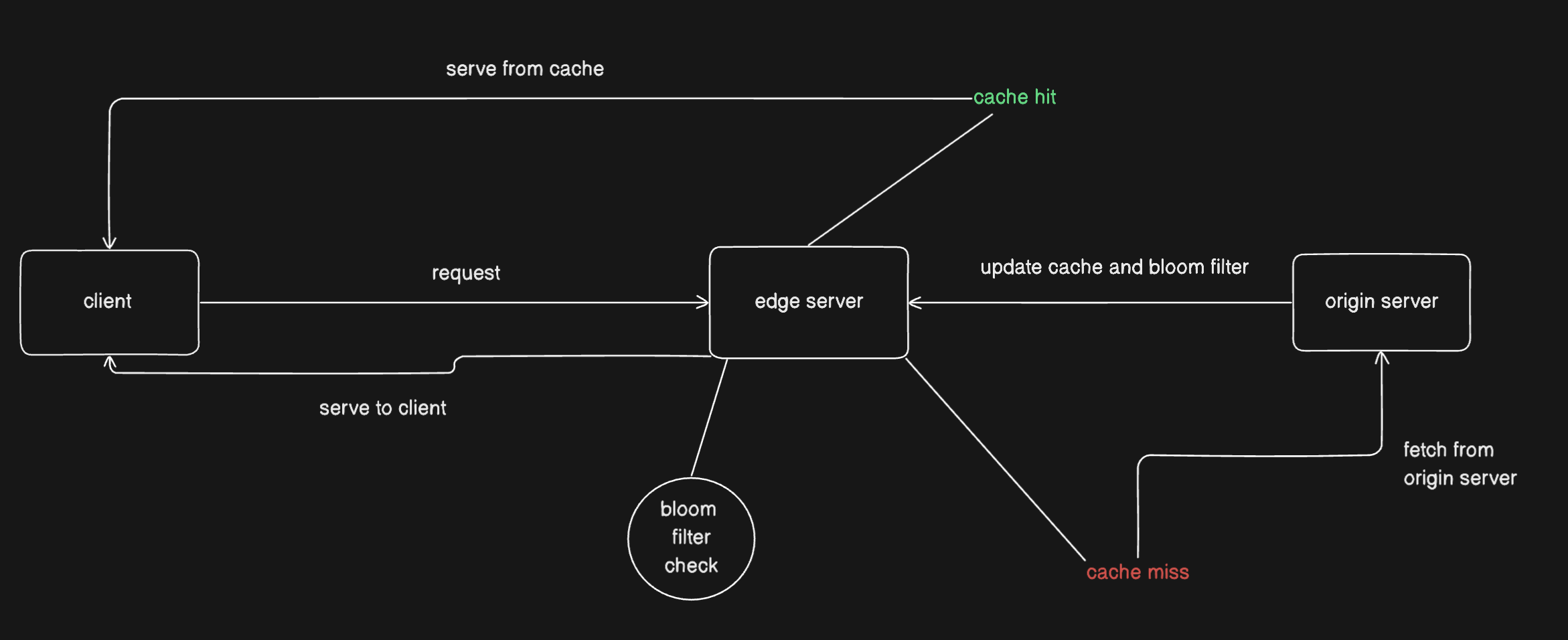bloom filters in web caching
while implementing web caching one of our key goal is optimizing the performance and one effective tool for this purpose is bloom filters
what are bloom filters?
a bloom filter is a space-efficient, probabilistic data structure used to test whether an element is a member of a set
when checked it can return false positives but never false negatives, it means that a bloom filter can definitely say an element is not in a set but can only say an element might be in a set or might not be
key properties
- uses less memory compared to other data structures
- both insertions and queries are performed in constant time
how bloom filters improve web cache performance?
web caching means storing copies of resources to serve future requests faster, let's see how bloom filters improves web cache performance
-
they quickly checks if a resource might be in the cache before accessing the disk resulting in lesser disk reads
-
faster lookups lead to reduced response times for cache hits
-
optimizes memory and processing power usage by reducing the load on caching mechanisms
practical implementation in CDNs and browser caching

-
CDNs
they can be used to manage the cache at edge servers
-
when the client makes a request, the edge server uses a bloom filter to check if the request resource might be in the cache
-
if the bloom filter returns a positive result, the server then checks the cache
- if hits, the resource is served from the cache
- if miss, the resource is fetched from the origin server and then stored in the cache
-
the bloom filter is updated to include the new resource
-
similarly it can be used to manage the local cache as well